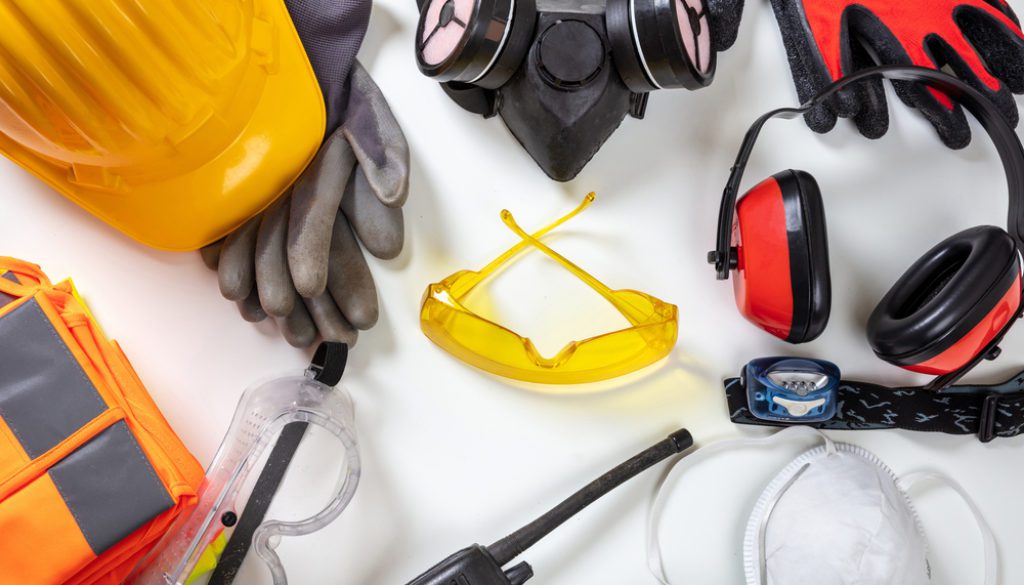November Safety Training: Personal Protective Equipment
Occupational safety is a vital topic that affects employers and workers in every sector, from education to healthcare. Schools, businesses and government organizations have a responsibility to keep their employees safe on the job, and one way to do that is to provide appropriate personal protective equipment (PPE) and train workers to use it properly.
The Occupational Safety and Health Administration (OSHA) requires employers in many industries to provide their employees with PPE. OSHA regulations also cover training; organizations must not only provide personal protective equipment but also train workers to use it correctly.
Many occupational injuries are preventable with PPE
The Bureau of Labor Statistics tracks employer-reported occupational illnesses and injuries. In 2021, there were 2.6 million nonfatal workplace injuries and illnesses reported by private industry employers. The rate of occupational injuries in 2021 was slightly higher than that in 2020: 2.3 cases per 100 full-time equivalent (FTE) workers vs. 2.2 cases per 100 FTE workers.
Occupational illnesses and injuries can negatively impact morale and productivity. In 2021, there were over 1 million work-related injuries and illnesses where the victim missed at least one day of work.
Personal protective equipment can reduce the frequency and severity of occupational illnesses and injuries. One study shows that appropriate PPE was extremely effective in preventing healthcare workers from acquiring COVID-19 even when frequently exposed to COVID-positive patients.
PPE is especially important in sectors that have a high number of preventable work injuries: agriculture, mining, construction and manufacturing. Unfortunately, PPE usage isn’t consistent on many worksites. According to one study, 16% of workers who sustained head injuries on the job were wearing hard hats, and only 1% of workers who experienced face injuries were wearing face protection.
Essential PPE training topics
Personal protective equipment safety training should help workers feel confident they can access, maintain and use PPE when necessary.
- Preventable accidents and injuries: Organizations should ensure their workers are aware of the most common preventable injuries in their field. For example, many injuries on construction sites are caused by falling objects, so OSHA requires workers to wear hard hats.
- Types of PPE: There are many different types of PPE designed to protect against various threats. Eye and face protection includes safety glasses and face shields. Hard hats provide head protection, and safety shoes protect feet from impacts and extreme heat. Gloves and earplugs are other examples of PPE.
- Using, maintaining and replacing PPE: Train workers to know when they need to wear PPE and how to put it on properly. They should also learn how to maintain their safety equipment and recognize when it needs to be replaced.
- Additional safety protocols: PPE training can also include reminders of relevant safety topics, such as using equipment correctly and recognizing unsafe situations. Encourage workers to report any unsafe conditions to the appropriate party. Make plans to respond to worksite emergencies.
Some OSHA standards state that PPE must meet standards regulated by the American National Standards Institute (ANSI). Employers are responsible for knowing and following the OSHA regulations that apply to them.
Keep your people safe by providing PPE and safety training
Employers and organizations have a duty of care toward their workers. One of the best ways to protect employees from workplace injuries is to provide adequate personal protective equipment and comprehensive training on how to use it properly. Incorporating a PPE course into annual safety training is an important first step, but it’s essential to follow up.
Employers should proactively communicate PPE reminders to ensure all workers know how to use, maintain and replace their gear. Workers should also have the agency to report workplace safety concerns, including a lack of PPE.
Rave Mobile Safety offers a range of communication solutions to support occupational safety. Managers and HR representatives can send multichannel alerts to remind employees to use PPE and inform them of updated regulations. Our mobile-based tools facilitate anonymous tips, enabling individuals to report safety concerns or compliance violations. And workers can use our panic button app to immediately connect with 9-1-1 during a workplace emergency. Contact our team to learn more about our prebuilt or customizable communications solutions.





